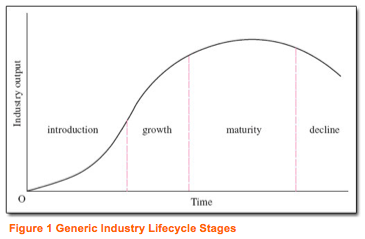Craft is Global
Sam Holloway, Ph.D. - Crafting A Strategy
Craft is Global – East London Edition
Standing at a craft beer bar in East London, one of the first of its kind, I was trying to blend in and take in the scene. I listened as customers came up and asked innocent questions like “I enjoy Stella Artois, do you have anything like that?” Before the extremely nice bartender could answer, another person at the bar jumped in, pleasantly suggesting: “This is craft beer, not that lager stuff you are used to, try the pale ale from Kernel Brewery, its dry hopped.” The bewildered Englishman took the advice, but didn’t really know what to expect. I felt like I had gone back in time to Oregon from 15 years ago. I distinctly remember the first time I tried craft beer. It was a Black Butte Porter from Deschutes Brewery in Bend, Oregon. I remember it tasted unlike any beer I had ever tried. As I watched this young Englishman taste his first craft beer, I smiled. The craft revolution is alive and well in England.

I was standing at The Craft Beer Co. Clerkenwell, the original location of this thriving chain of beer bars. They had 15 beers on draft and at least another 15 in casks, the bar staff was incredibly friendly and knowledgeable. They had just opened their sixth location the day before, in Covent Garden – a wonderful part of town with an open market, theaters, plenty of people watching and plenty of action. I kept listening, a much more knowledgeable customer asked for a Stone IPA on draft, and reveled with her friends at her visit last year to Stone’s HQ in Escondido, CA. I asked the very friendly and knowledgeable bartender for something local, and she handed me the Kernel Brewery Pale Ale, it was delicious with just the right amount of hop forward taste. We struck up a conversation and she had all the right answers. I was thinking about their business model, about how well trained and well spoken the bar staff was, and as people started piling in around me on this Saturday night in London, I began to feel the energy of something new, something important, and something incredibly local.

The bartender asked me where I was from, I said Portland, Oregon and quickly showed me the cooler behind the bar with 22 oz. bottles of Rogue, Stone’s Seasonal, Arrogant Bastard and many other familiar favorites from the USA. I told her I was a professor that studies beer companies and we engaged in a spirited banter about how excited Londoners were to have local craft beer. As she handed me my beer and glanced over to the patiently waiting customers, I thanked her and sipped my first English craft beer. Before I could set it down, two locals approached me. Stuart and Anna were serious craft beer fans, having traveled all over the USA searching for great beer. Stuart began: “We were eavesdropping on your conversation and you must have the coolest job in the world.” I smiled, offered them cheers and said, “I absolutely do.” Stuart reveled in the pint of Boneyard’s Hop Venom he had on his last trip to California – this guy really knew his stuff! For the next two hours, Anna and Stuart chatted to me about London pubs, the best beer, and their friends who had just started Hackney Brewery a couple of miles away. I’ll definitely be contacting these home brewers gone Professionals, Jon Swain and Peter Hills.

Stuart and Anna could not have been more gracious ambassadors of the burgeoning English Craft Beer scene. As we talked and bought each other beer, I was reminded that people care so deeply about quality, they care about local businesses, and the sense of pride they showed while talking about their friends Jon and Peter, and the beer they were making. Truly, Hackney brewing was the hub of that neighborhood.
I’ll keep this short, but my evening in East London confirmed what I have been watching all over the world – Craft Beer is Global. It gave me the idea to share with you stories about the people I meet as I travel the world searching for new answers to old business problems. I plan to visit Hackney Brewing in a few days, I can’t wait to see their operation, talk to the owners, and enjoy their beers. Keep your eyes open for a regular feature from Mark Meckler and me as we travel the globe this year. Craft is Local. Craft is Global. Thanks for visiting CRAFTINGASTRATEGY.COM



